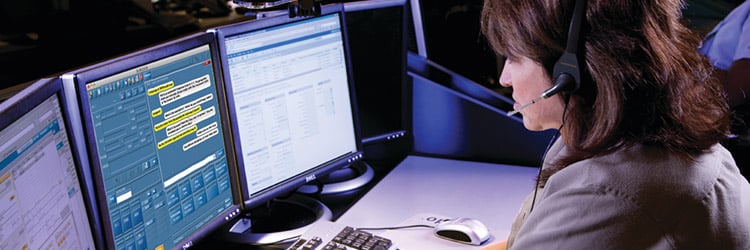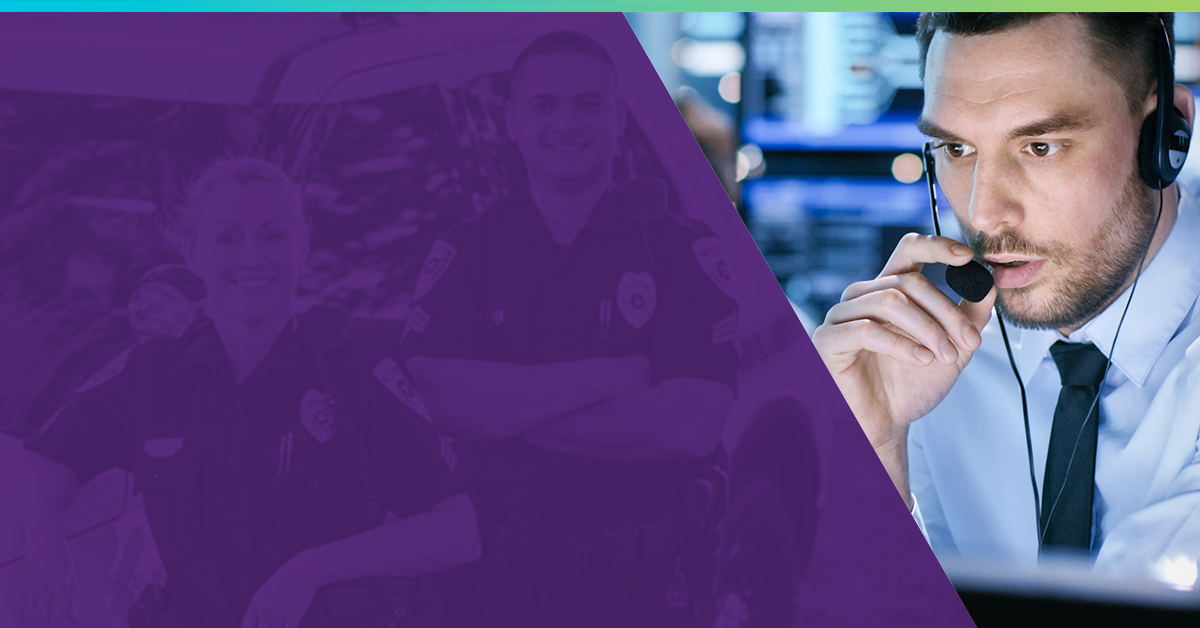Inside the Journey of a 911 Call
When an emergency strikes, you pick up the phone and call 911. A helpful call taker confirms your address, gets the details of the emergency, and...
This probably won’t come as news to you: Something like 3.5 billion people around the world consume some type of digital video, whether streamed or downloaded. And about one-quarter of that time is spent watching live video. Eighty percent of live-stream viewers say they prefer watching a stream to reading content. Why? Because if a picture is worth a thousand words, a video is worth a billion.
I couldn’t agree more.
Now, the power of live video has come to emergency communications. Here at Intrado we just introduced Power 911 PSAP Initiated Video, which seamlessly integrates a live video stream into a 911 telecommunicator’s call workflow. With a single click, they can open a panel to initiate a live video streaming session with any wireless caller–all without leaving the same user interface they already know. No over-the-top solutions. There is virtually no learning curve or downtime.
Picture (quite literally) having “eyes on the scene” in real time: the ability to see the size of a burning building and what’s around it, the number and type of vehicles involved in a crash, the patient struggling to breathe, the location of an incident and current weather conditions. Only time will reveal the full impact of making video immediately and easily accessible to 911, but it will be exciting to watch the ways live-streaming will be used to improve responder awareness and safety, save lives, prevent injury and protect property. Even better, the cloud-native system securely stores the full, time-stamped history of every call for 90 days, so it’s also simple to do a post-incident review.
One of the most important aspects of our solution is the fact that the control of the call remains in the hands of the expert—the telecommunicator. They initiate the sharing of video and can quickly decide if and when to watch the live stream themselves and when and if to share it with first responders. Or they can pass along the video without watching it. Research makes clear that the mental and physical toll of being a telecommunicator is significant, so any tool that makes the job easier and eases stress is important.
Just as critical, we designed Power 911 PSAP Initiated Video to integrate into our existing call-handling interface because we know that when it comes to technology (as with so many things) more is often not more. A telecommunicator’s job requires multitasking, which, the American Psychological Association notes, “takes a toll on productivity.” Adding more functionality while also requiring more learning and attention to new tasks wasn’t a win in our book.
Emergency responders are likely to be most profoundly affected by the ability to stream live video during a 911 call. There is, after all, nothing more important when it comes to saving lives than information. That’s doubly true when that information exponentially improves a firefighter’s, police officer’s or EMS clinician’s situational awareness.
As a 2019 National Institute of Standards and Technology (NIST) report of 200 first responders in the fire service, EMS, law enforcement and 911 put it, “the greatest need for cutting-edge technology, across disciplines, is for devices that provide information to the first responders in real-time….First responders want timely, accurate information during incident response….nearly 50% of real-time technology needs in our interview data is related to live video and images of the scene.” Put more simply, responders and their colleagues in emergency communications at the ECC don’t need more technology. They need trustworthy, reliable, intuitive technology in the moment.
The public stands to benefit, too, from adding video capability. Many already expect 911 to operate as seamlessly as the food delivery services that locate us quickly and precisely. But it’s not uncommon for PSAPs to struggle to keep location information up-to-date and accurate. And many centers simply don’t have the resources to evolve their call handling solutions toward the geographic information system (GIS) data that Next Generation 911 (NG911) systems require.
Adding video moves us closer to getting and sending information in the ways most of us already use in other parts of our lives. And being able to say to a distraught caller, “can you share what you’re seeing on your phone with me?” not only gives the telecommunicator the power to expertly assess what’s happening, but it also relieves the caller of the burden of conveying what they are seeing and reduces the chances they describe it inaccurately.
It’s not hard to see how much there is to gain. Talk to your colleagues in law enforcement, the fire-rescue service, and EMS about whether live video streaming would enhance their situational awareness. Reach out to your telecommunicators about the benefits of introducing video and openly talk through any concerns they might have. In short, involve key stakeholders in conversations about what technology is right for your personnel and community right now.
Having worked in technology for the last three decades, I know live-streaming video in 911 is just the start. My colleagues and I, and others in public safety, will continue to explore new and better ways to use video and a host of other tools to empower telecommunicators and protect our first responders and our communities.
Denis Marin is a Senior Product Manager at Intrado
To learn more about Power 911 PSAP Initiated Video, the VIPER call-handling system or any solution in Intrado’s public safety suite, visit intrado.com/psap-solutions.

When an emergency strikes, you pick up the phone and call 911. A helpful call taker confirms your address, gets the details of the emergency, and...

The information that Public Safety Answering Points (PSAPs) can receive today has come a long way since 911 service first debuted in 1968 (check out...

For more than a decade, Hamilton County Communications Center has been a loyal user of Intrado products. They rely on Intrado VIPER® and Power 911®...

In July 2021, Intrado and ADT joined forces to deliver alarm data directly to text-enabled 911 centers in a whole new way that doesn’t require a...